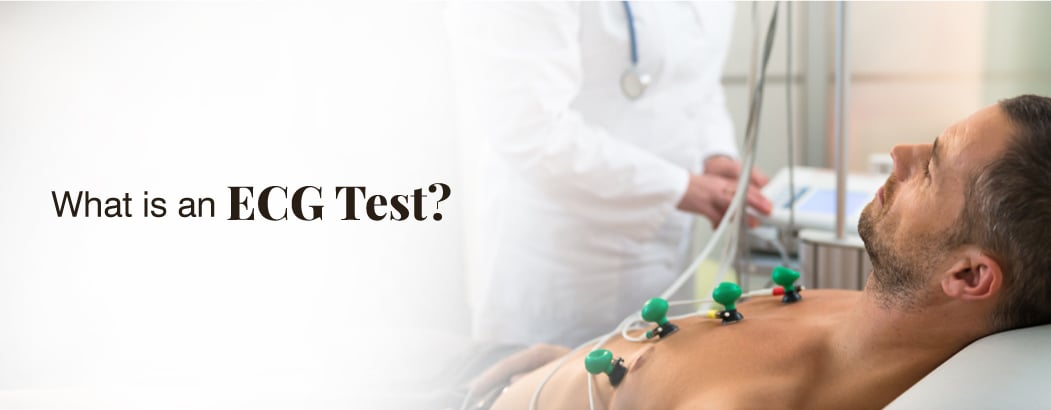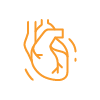What is an ECG Test?
February 17, 2025

A common medical examination called an electrocardiogram checks the electrical pattern of the heart. Holter monitoring is commonly referred to as a non-invasive procedure involving the placement of electrodes at the patient’s body surface and recording of the heart’s electrical activity. This article seeks to analyze different segments that constitute an ECG or EKG test, such as its execution, analysis of outcomes, utility, technological improvements, and relevance in medicine.
During a successful ECG test, a technician will put electrodes in certain parts of a person’s chest, armpits, and legs. These electrodes are linked to a recorder of electrical signals, which are generated by the heart. This is a short test that lasts only for a couple of minutes is painless and does not pose any danger.
The test is performed using an electrocardiogram (ECG) by a machine that records the changes in the current of the heart. The various waves and intervals in this graph indicate the various stages of the heartbeat. It is useful in determining the rate, rhythm, and problems associated with the rate of the heart.
When Is an ECG Test Needed?
An ECG (electrocardiogram) test is often recommended when a person exhibits symptoms like chest pain, dizziness, shortness of breath, or unusual heart rhythms (palpitations). If a patient is feeling lightheaded, experiences fainting, or notices a pounding or fluttering heartbeat, an ECG can help diagnose any abnormalities. It’s also used for routine checkups, especially if someone has a family history of heart disease or is at higher risk of heart problems. Additionally, individuals who are undergoing heart disease treatments, taking medications, or recovering from a heart attack may require periodic ECG monitoring to ensure their heart is functioning properly. For those who have a pacemaker or are preparing for surgery, an ECG can assess the heart’s readiness and overall health.
Interpretation of ECG Results
The testing machine generates a line diagram that represents the electrical activity of the heart. The cardiac cycle consists of numerous waves, each indicating a phase of this process. It is a source of useful data on the heart’s rhythm and rate as well as anomalies if they exist.
Since it is very difficult for an average non-specialized person to interpret an ECG on their own correctly, interpreting an ECG test normally requires the help of a medical specialist like a cardiologist or an electrophysiologist. This involves examining the different components of an electrocardiogram so that the presence of any irregularities and signs of heart disorder can be established. These may include cardiac arrhythmias, damaged heart muscle, and low blood flow to the heart.
Application
Applications of ECG tests cover cardiology as well as general healthcare. They are typically applied in identifying and tracking conditions such as arrhythmia, heart attack, heart failure, and congenital heart defects. Additionally, ECGs may serve to screen people who are at high risk for heart disease or as a routine medical evaluation.
Besides the diagnosis of heart disorders, ECGs are also helpful when evaluating how treatments work, monitoring the progress of cardiac rehabilitation, and providing directions on medicinal administration or additional examinations. Often, before a surgical procedure to determine whether the patient’s heart is strong enough to withstand surgery, an ECG test will be taken.
Different Types of Monitors
There are several ECG monitoring options based on the duration and frequency of monitoring needed:
- Holter Monitor: This portable device is worn for 24 to 48 hours, or even longer, to monitor the heart’s electrical activity while going about daily activities. It’s especially helpful when symptoms such as palpitations or dizziness are irregular.
- Event Monitor: Similar to the Holter monitor, it records heart activity only at specific times. The wearer activates the monitor when they experience symptoms. This monitor is typically worn for a period of 30 days, and it can either be manually triggered or automatically triggered when an irregular rhythm occurs.
- Personal ECG Devices: Some wearable devices, such as smartwatches, come with ECG apps that allow users to track their heart’s electrical signals in real-time. These can offer a convenient solution for individuals seeking regular heart monitoring or managing heart conditions with guidance from a healthcare provider.
Understanding the Reading
An EKG test captures the electrical activity of the heart, which is displayed in a series of waves. The healthcare provider will interpret the following main components of the EKG reading:
- P Wave: This shows the electrical impulse as it moves through the atria, triggering them to contract. It signifies the initiation of a heartbeat from the sinoatrial (SA) node.
- QRS Complex: This wave shows the ventricles contracting, enabling them to pump blood to the lungs and the rest of the body. It’s a strong and rapid electrical activity that follows the P wave.
- T Wave: This wave reflects the heart’s recovery phase, where the ventricles relax and reset for the next heartbeat.
Healthcare providers will analyze the timing and strength of these waves to determine if there are any irregularities, such as arrhythmias, signs of heart attacks, or other heart conditions like enlargement or abnormal electrical conduction.
Test Advancements
ECG technology has significantly improved over the years, leading to a high level of precision and efficacy as a diagnostic tool. In a conventional ECG, different electrodes are positioned on the chest, arms, and legs. Nonetheless, wearable ECG devices exist that permit prolonged monitoring for weeks or months.
Therefore, ECG patches or smartwatches are convenient wearable devices that benefit both patients and healthcare professionals. They are more useful for people with suspected heart rhythm abnormalities that may not be captured during an in-office ECG test. The data from these devices can be sent to healthcare providers for analysis and interpretation.
Preparing for the Test
When preparing for an EKG test, there are a few things to keep in mind to ensure accurate readings:
- Clothing: Wear a shirt that you can easily remove, as the electrodes will be placed on your chest. Avoid full-length hosiery, since electrodes need to be placed directly on your legs as well.
- Skin Care: On the day of your test, avoid using skin creams or lotions that are oily or greasy. These may hinder the electrodes from establishing proper contact with your skin.
- Eating and Drinking: You can eat and drink as you normally would before the test, but it’s always a good idea to follow any specific instructions your healthcare provider gives you, especially if you have any underlying conditions.
By following these steps, you can help ensure the EKG test is as effective and accurate as possible in assessing your heart health.
Conclusion
ECG test remains an important resource for cardiology that gives information concerning the electrical activity of the heart. It is a non-invasive and painless procedure that is of critical importance in diagnosing and monitoring various heart problems. ECG monitoring is now increasingly affordable and convenient with technological advances, enabling constant and distant assessment of cardiac wellbeing.
If you have worries about your cardiac well-being or are experiencing pain in the chest or palpitations, visit a physician and determine whether an examination with an electrocardiogram is required. Therefore, early diagnosis and medical management of heart diseases often result in a better prognosis as well as an improved quality of life.
Frequently Asked Questions
1. How often should I have an ECG test?
However, the frequency of ECG testing is associated with specific risk factors and the medical history of individual patients. Consult with your healthcare provider for individualized advice.
2. Can ECG results vary from person to person?
Yes, ECG results, too, differ with age, gender, and general well-being. These results should, therefore, be compared to a baseline so as to get an accurate interpretation.







